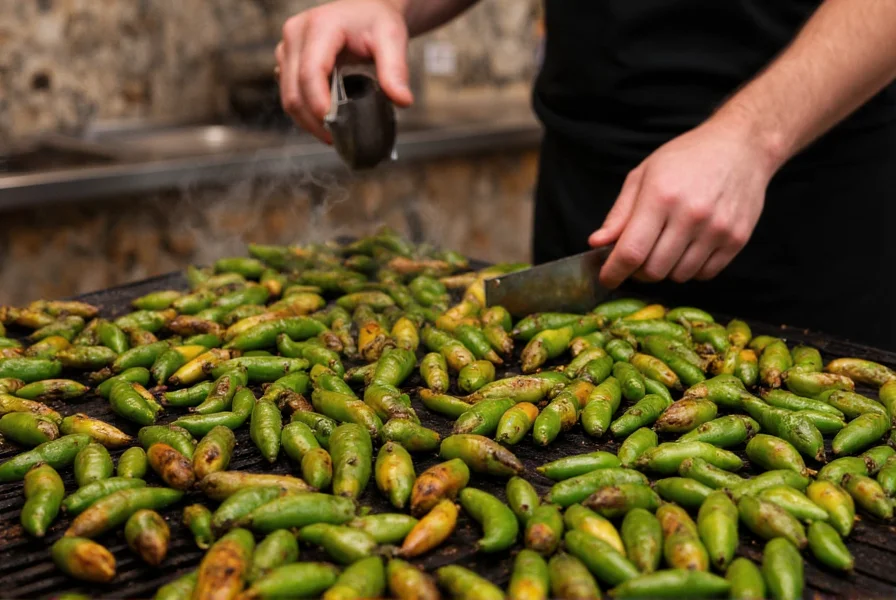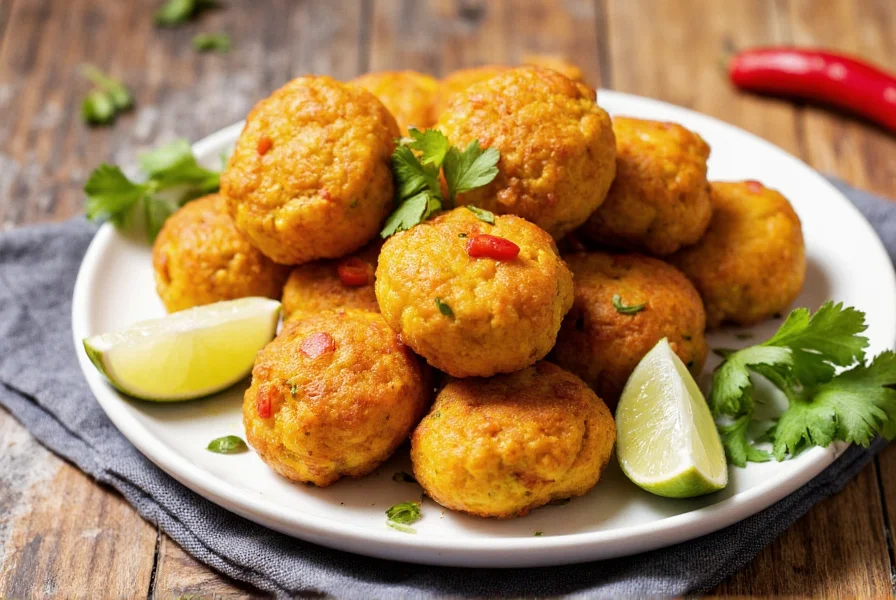Hatch peppers, grown exclusively in the fertile valleys along the Hatch River in New Mexico, represent one of America's most celebrated seasonal ingredients. Available fresh only from late July through September, these green chiles offer a unique flavor profile that varies dramatically based on their heat level—ranging from the approachable mild variety to the fiery hot. Unlike generic "green chiles" found year-round in cans, authentic Hatch peppers deliver a complex taste that combines earthy, grassy notes with a subtle sweetness and varying degrees of heat that makes them indispensable in Southwestern cooking.
Understanding Hatch Pepper Varieties
Before diving into recipes, it's essential to understand the different varieties available during Hatch season. The three primary heat levels you'll encounter include:
| Heat Level | Scoville Units | Best Recipe Applications |
|---|---|---|
| Mild (6-8,000) | 1,000-4,000 | Family-friendly dishes, cheese sauces, stuffed peppers |
| Medium (5-6,000) | 4,000-8,000 | Enchiladas, stews, roasted pepper sandwiches |
| Hot (4-5,000) | 8,000-12,000 | Salsas, hot sauces, bold meat dishes |
These measurements represent the typical Scoville heat range for each variety, though actual heat can vary based on growing conditions. The medium variety offers the ideal balance for most fresh hatch green pepper recipes, providing noticeable heat without overwhelming other flavors.
Essential Roasting Technique for Maximum Flavor
The signature step in authentic roasted hatch pepper recipes is proper roasting, which transforms the peppers' flavor profile and makes them easier to peel. Follow this professional method:
- Preheat your oven broiler to high or prepare a gas grill
- Place whole peppers directly on oven rack or grill grates
- Rotate frequently until evenly blistered and blackened (about 8-12 minutes)
- Transfer to paper or plastic bag, seal, and let steam for 15 minutes
- Peel skin under running water, removing seeds and membranes
- Store in airtight container with 1 tablespoon olive oil per cup of peppers
This technique develops the characteristic smoky flavor that defines the best traditional new mexican hatch pepper recipes. For those without outdoor cooking space, a cast-iron skillet over high heat works well for small batches of hatch chile pepper recipes for beginners.

Signature Hatch Pepper Recipes
These carefully selected recipes represent the most authentic applications of fresh Hatch peppers, organized by meal type for easy reference. Each recipe preserves the distinctive flavor while accommodating various skill levels.
Hatch Green Chile Chicken Enchiladas
Prep time: 25 minutes | Cook time: 30 minutes | Serves: 6
This classic Southwestern dish showcases medium-heat Hatch peppers in a creamy, flavorful sauce that's become a staple in hatch pepper season recipes. The roasted peppers blend perfectly with Monterey Jack cheese for a balanced heat profile.
Ingredients:
- 8 large roasted Hatch green chiles, peeled and chopped
- 2 cups cooked shredded chicken
- 12 corn tortillas
- 2 cups Monterey Jack cheese, shredded
- 1 onion, finely diced
- 2 cloves garlic, minced
- 2 tablespoons butter
- 2 tablespoons flour
- 2 cups chicken broth
- Salt and pepper to taste
Instructions:
- Preheat oven to 350°F and grease a 9x13 baking dish
- Sauté onion and garlic in butter until translucent
- Add flour to create roux, cooking for 1 minute
- Gradually whisk in chicken broth until smooth
- Add 6 chopped Hatch peppers to sauce, simmering for 10 minutes
- Dip tortillas briefly in sauce, then fill with chicken and cheese
- Arrange enchiladas seam-side down in baking dish
- Pour remaining sauce over enchiladas and top with remaining cheese
- Bake for 25-30 minutes until bubbly and golden
Hatch Pepper and Corn Fritters
Prep time: 15 minutes | Cook time: 20 minutes | Serves: 4
These crispy fritters make an excellent appetizer or side dish that highlights the sweet notes of mild Hatch peppers. Perfect for easy hatch pepper recipes for home cooking when you want something quick but impressive.

Preserving Your Hatch Pepper Harvest
Since fresh Hatch peppers are only available seasonally, proper preservation ensures you can enjoy southwestern hatch pepper dishes year-round. The three most effective methods include:
Freezing Roasted Peppers
After roasting and peeling, portion peppers into 1-cup servings, place in freezer bags with excess air removed, and freeze for up to one year. This method preserves flavor better than canning for hatch pepper recipes requiring fresh pepper texture.
Creating Hatch Pepper Puree
Blend roasted peppers with a small amount of water until smooth, then freeze in ice cube trays. Once frozen, transfer cubes to freezer bags. Each cube equals approximately one chopped pepper for easy measurement in soups and stews.
Drying for Chile Powder
For those interested in extending their Hatch pepper enjoyment, drying creates a versatile powder. String roasted peppers and hang in a warm, dry place for 2-3 weeks, then grind in a spice grinder. The resulting powder works beautifully in rubs and spice blends.
Expert Tips for Cooking with Hatch Peppers
Professional chefs recommend these techniques to maximize your how to cook with hatch peppers experience:
- Wear gloves when handling hot varieties to prevent skin irritation
- Adjust heat levels by removing more or fewer seeds and membranes
- Balance acidity with a splash of lime juice to enhance the pepper's natural sweetness
- Pair with complementary flavors like corn, cheese, and tomatoes that enhance rather than compete
- Start with milder varieties if new to cooking with Hatch peppers before progressing to hotter options
Remember that roasted Hatch peppers freeze exceptionally well, making them perfect for preparing large batches during peak season. This approach ensures you'll have authentic flavor for your hatch pepper season recipes throughout the year.
Frequently Asked Questions
When is Hatch pepper season?
Hatch pepper season runs from late July through September, with peak availability typically in August. This narrow window makes fresh Hatch peppers a prized seasonal ingredient in Southwestern cooking. The exact timing varies slightly each year based on weather conditions in New Mexico's Hatch Valley.
Can I substitute canned green chiles for fresh Hatch peppers?
While canned green chiles can work in a pinch, they lack the distinctive flavor complexity of fresh Hatch peppers. For the most authentic taste in Hatch pepper recipes, seek out frozen roasted Hatch peppers outside of season. If substituting canned chiles, use two 4-ounce cans for every pound of fresh peppers called for in recipes.
How do I reduce the heat in Hatch pepper recipes?
To reduce heat in Hatch pepper recipes, remove all seeds and white membranes (the hottest parts), then rinse the pepper flesh under cold water. For mild varieties, this typically eliminates noticeable heat. You can also balance heat with dairy products like cheese or sour cream, or add sweetness with corn or a touch of honey to counteract spiciness.
What's the difference between Hatch peppers and poblano peppers?
Hatch peppers are a specific regional variety grown only in New Mexico's Hatch Valley, with flavor that varies by heat level. Poblanos are a specific pepper variety that's always mild (1,000-2,000 Scoville units). Hatch peppers offer more flavor complexity with earthy, grassy notes, while poblanos have a more one-dimensional mild heat. For authentic Hatch pepper recipes, substitution isn't recommended as the flavor profiles differ significantly.
How should I store fresh Hatch peppers?
Store unwashed fresh Hatch peppers in the crisper drawer of your refrigerator for up to two weeks. For longer storage, roast, peel, and freeze them in airtight containers with a tablespoon of olive oil per cup of peppers. Properly frozen Hatch peppers maintain excellent flavor for 9-12 months, making them perfect for year-round hatch pepper recipes.











 浙公网安备
33010002000092号
浙公网安备
33010002000092号 浙B2-20120091-4
浙B2-20120091-4